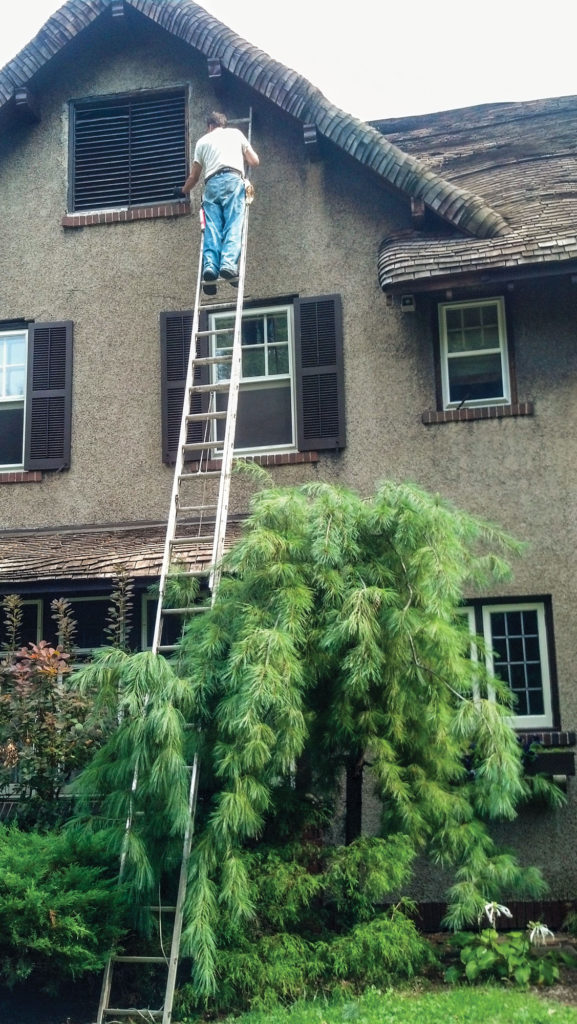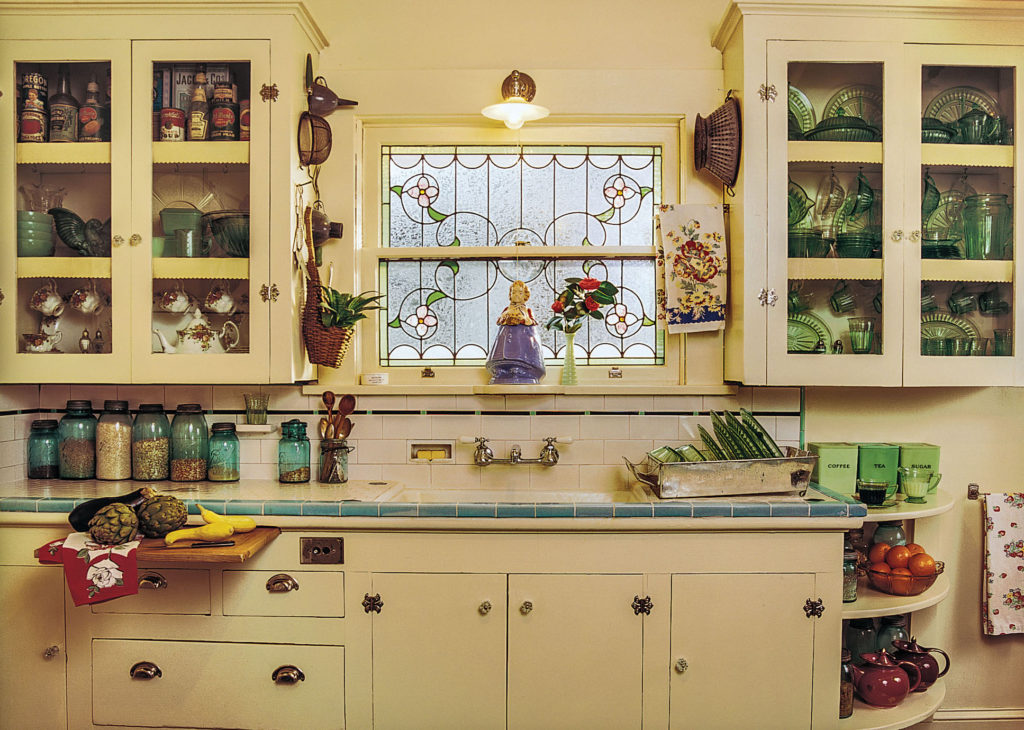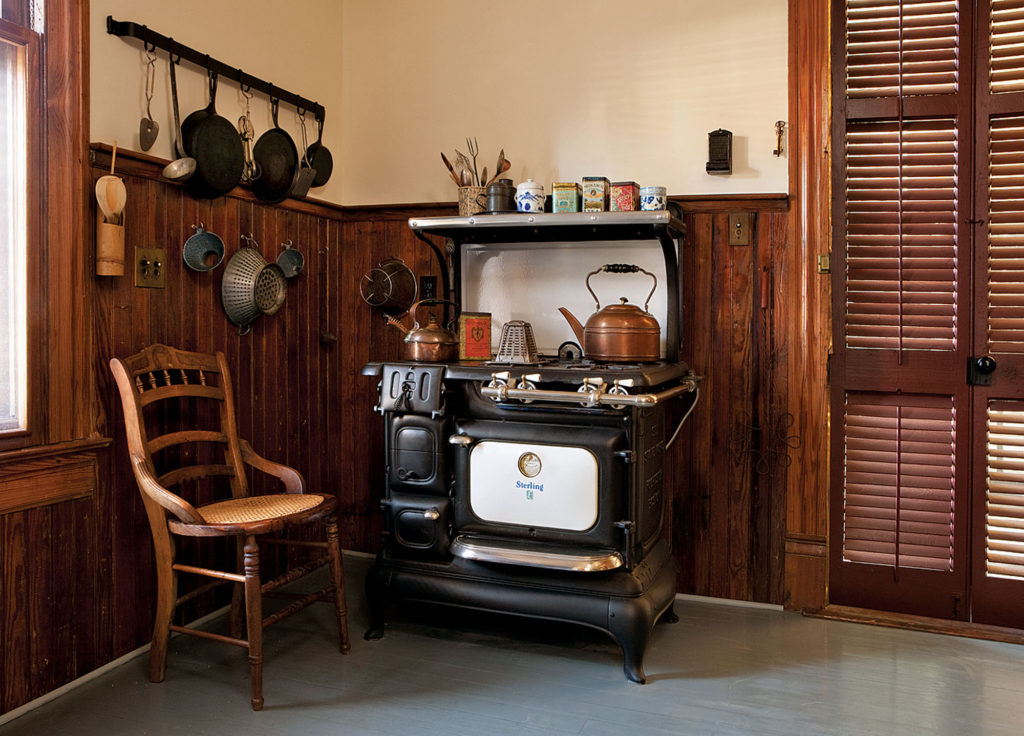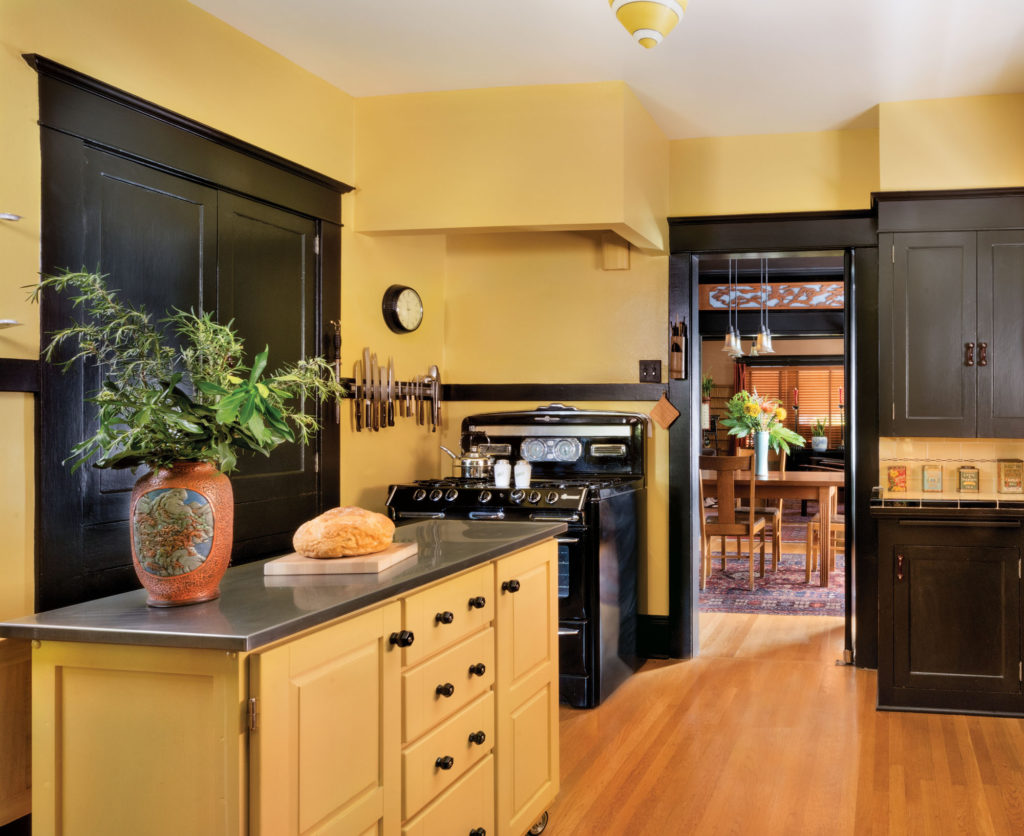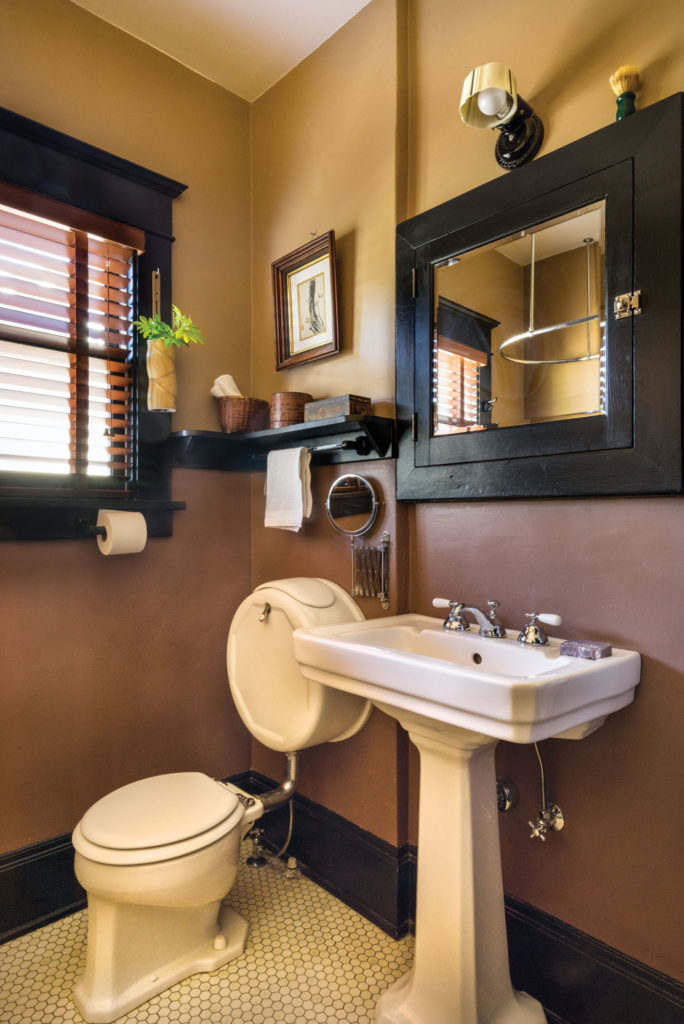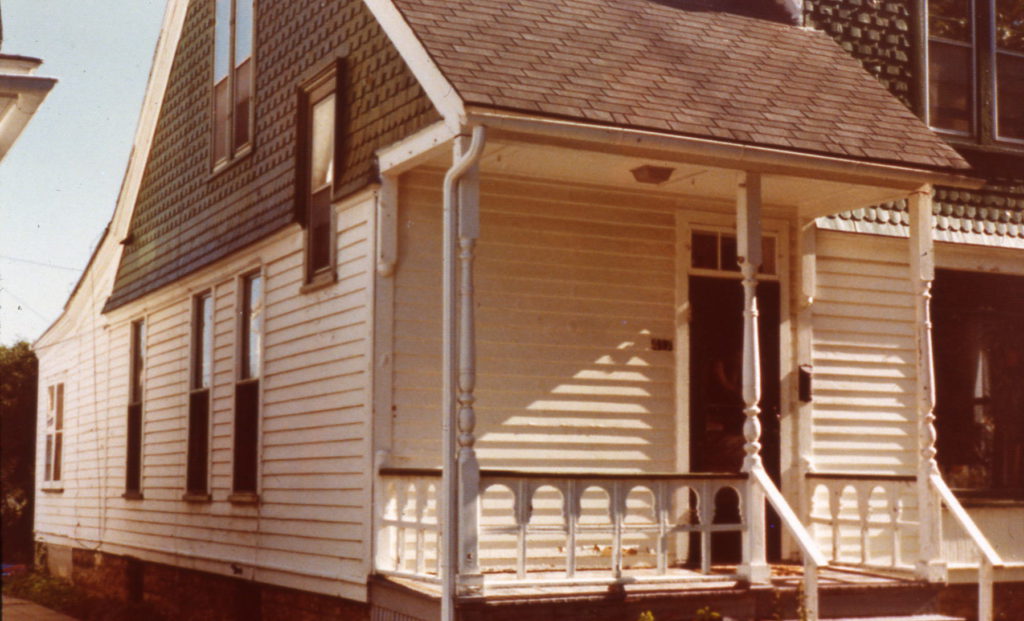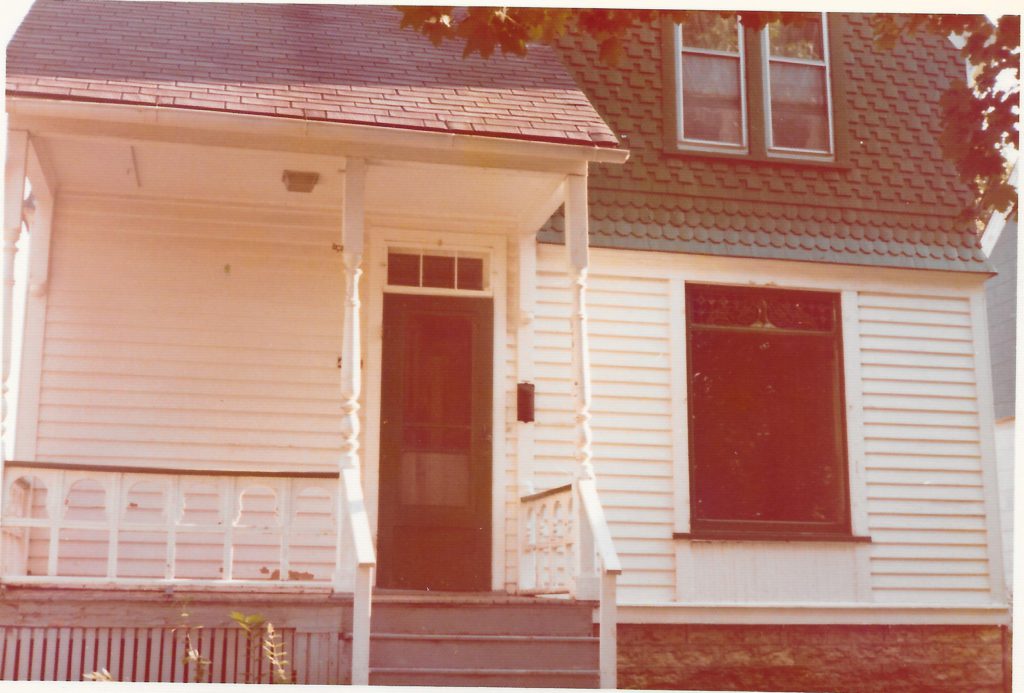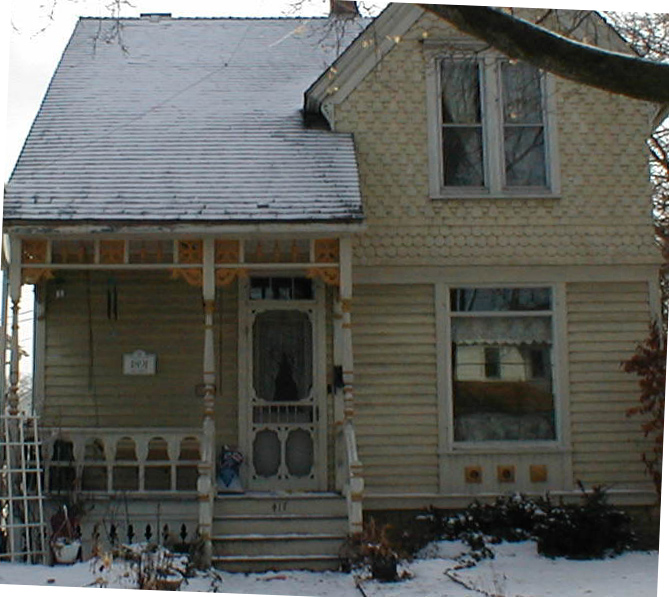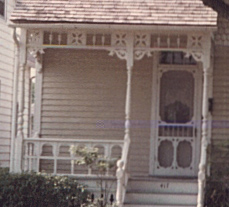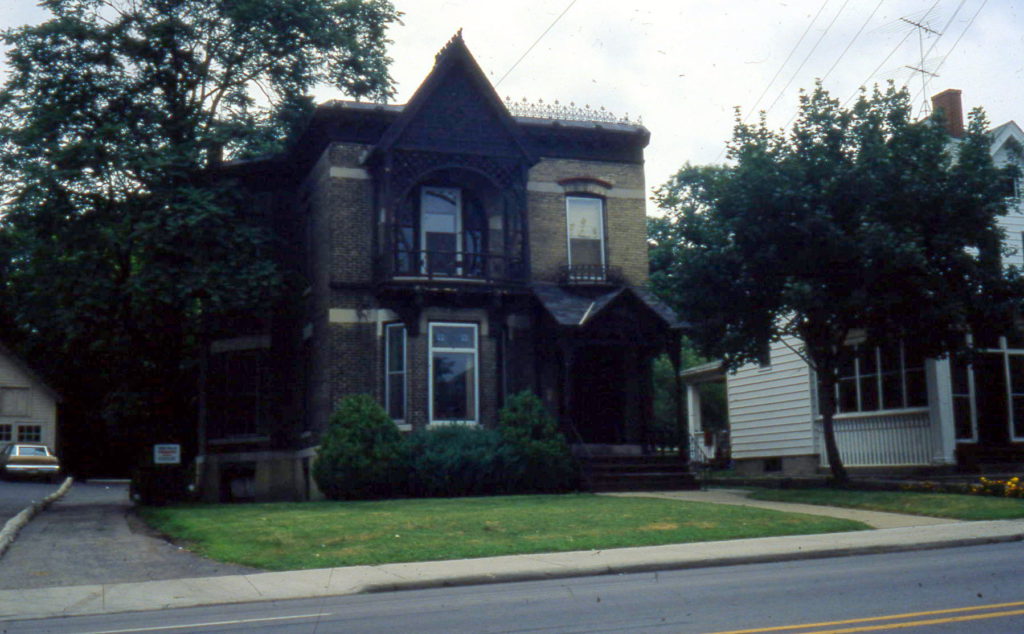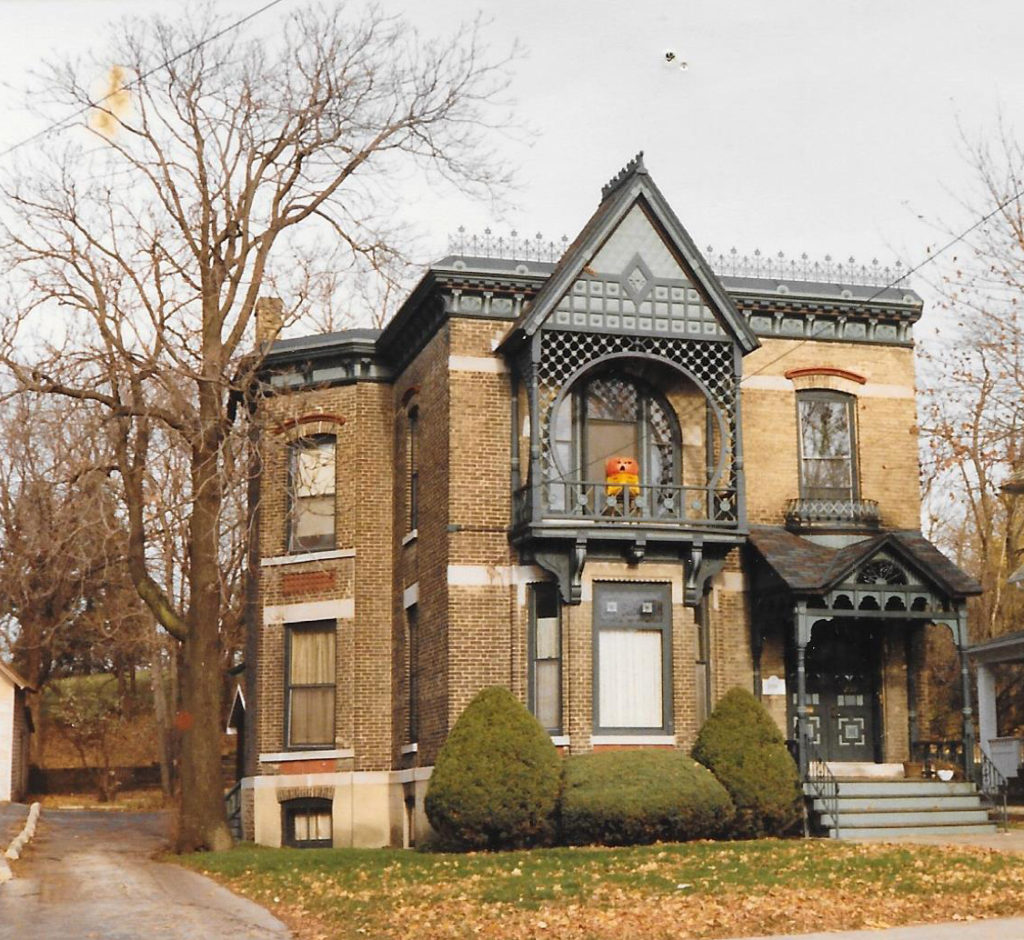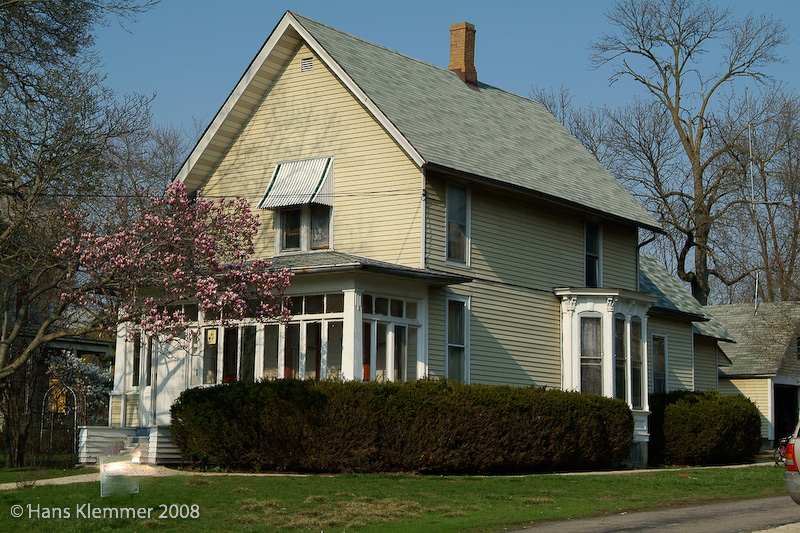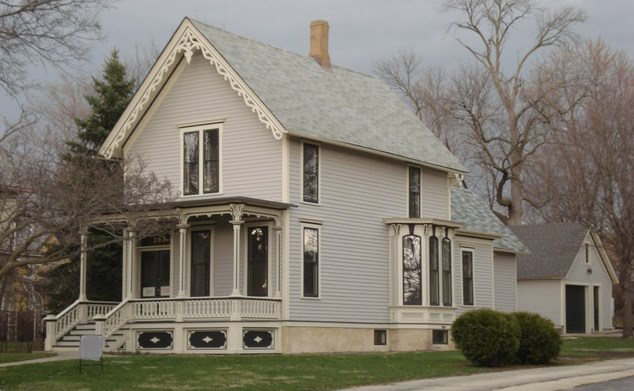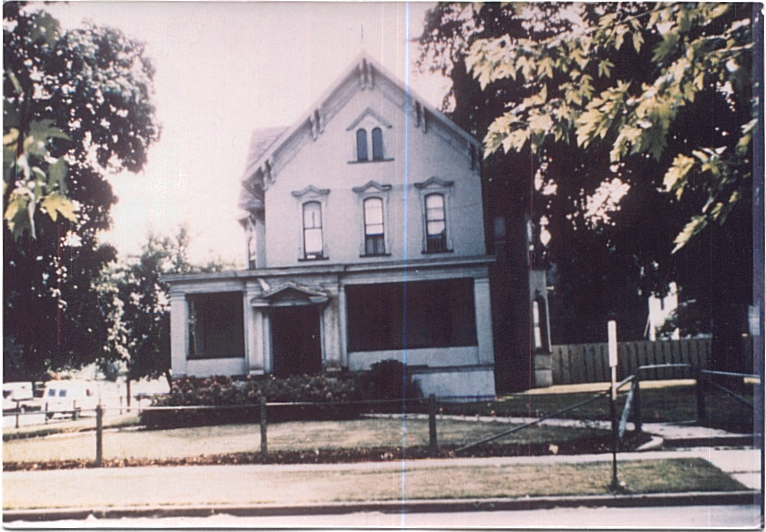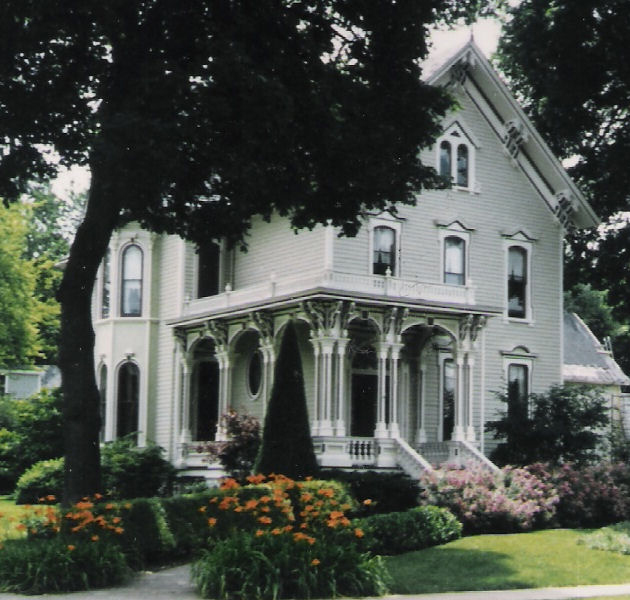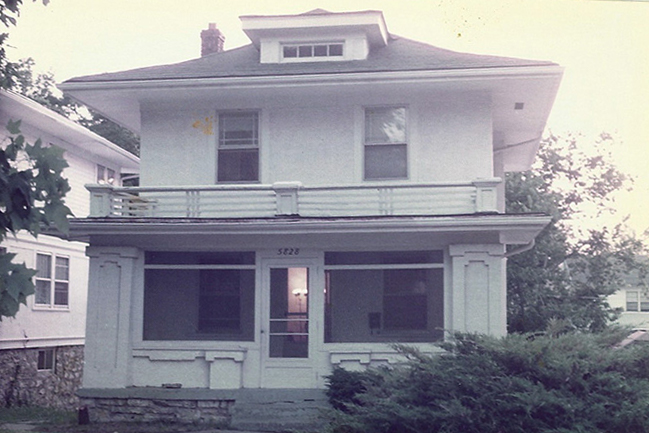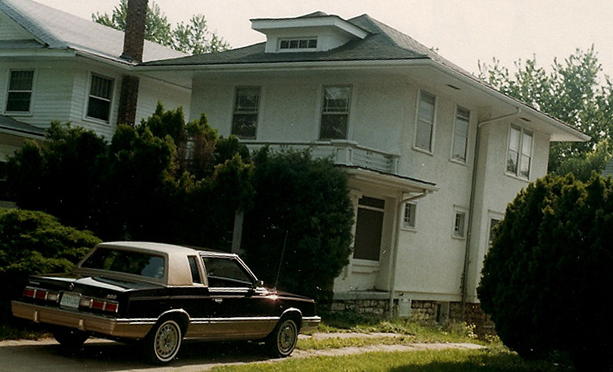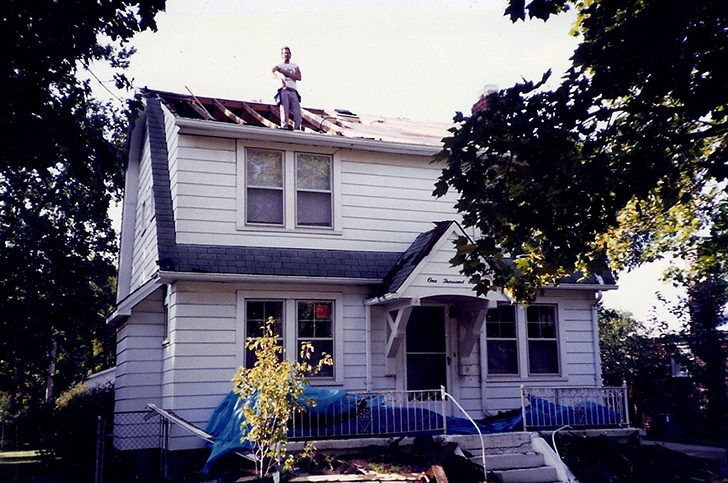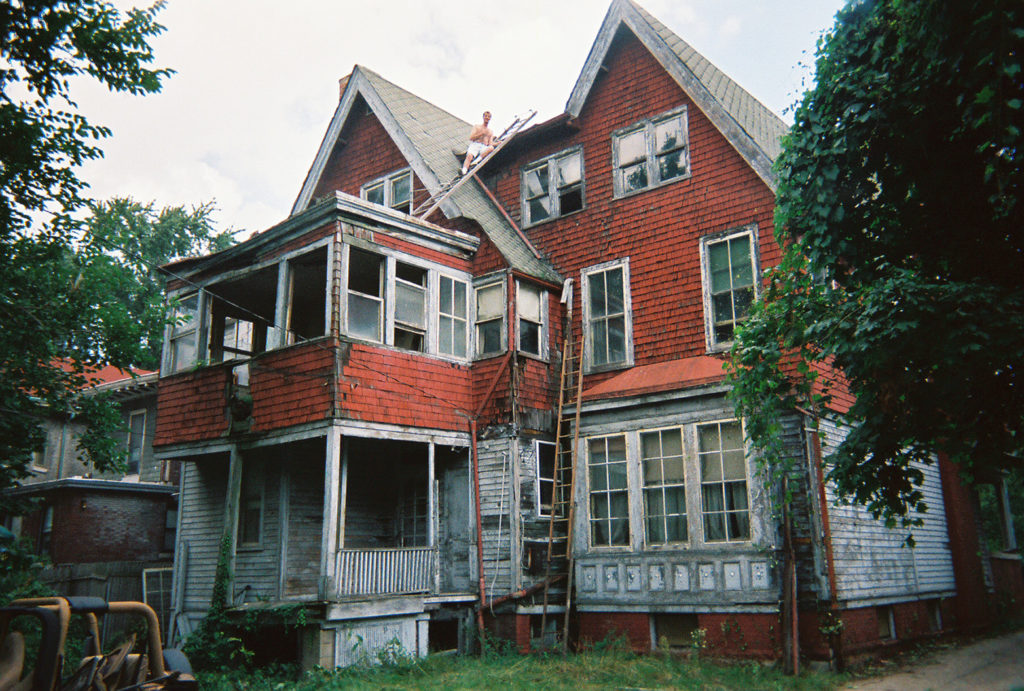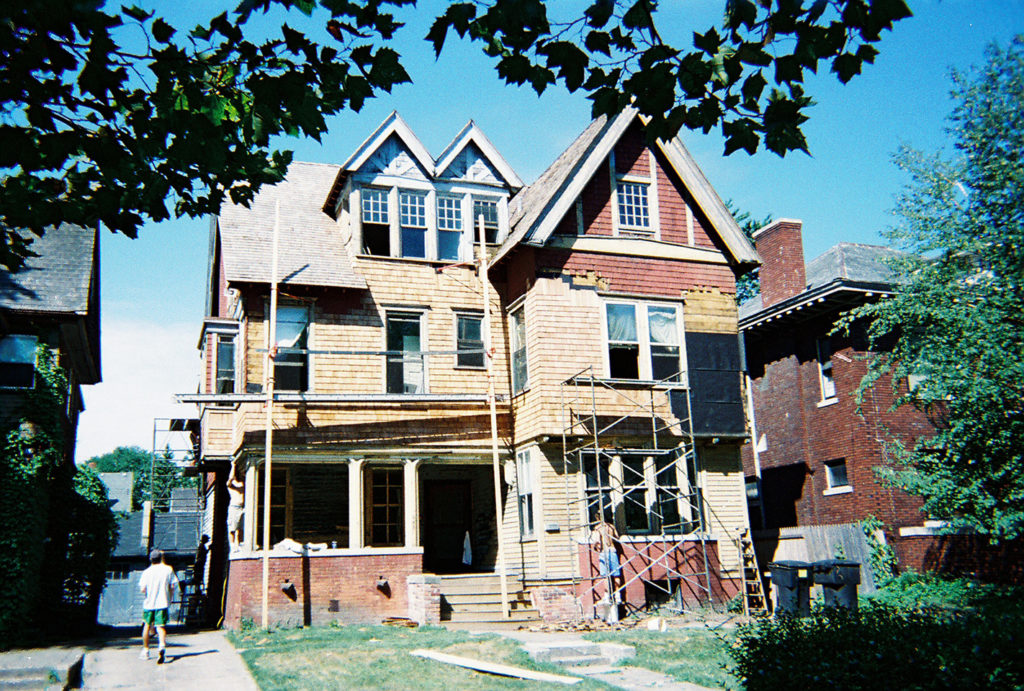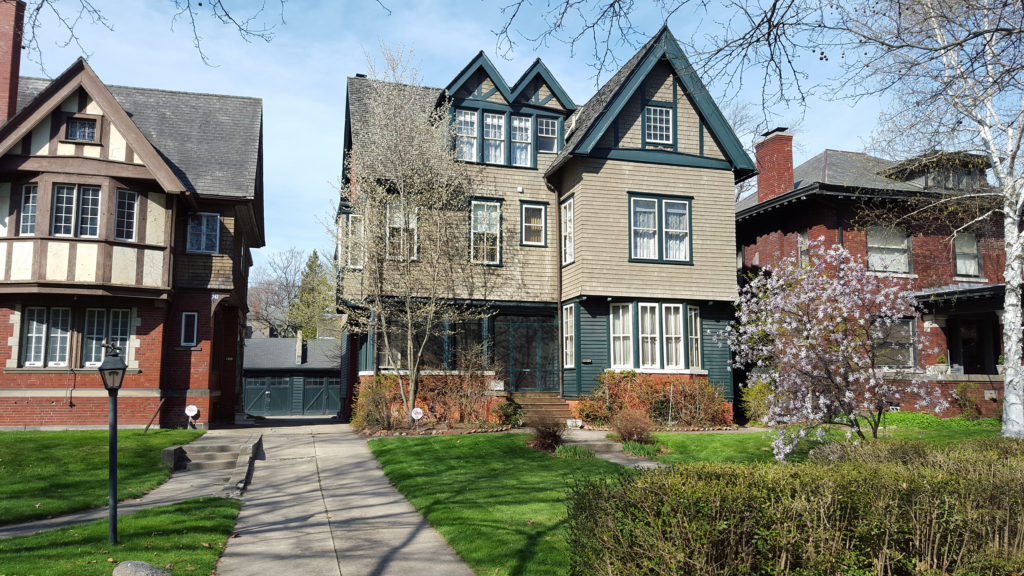An 800-square-foot Victorian cottage in Portland, Oregon, was the couple’s first restoration project.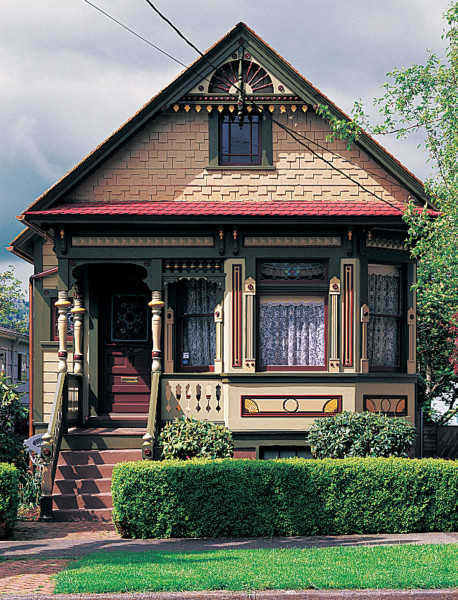
This October, Old-House Journal celebrates its 45th Anniversary—and many readers have been along for the ride! A recent survey told us that and also gave us these stats:
• 10% of readers are serial restorers who have restored three or more houses
• 8.5% are in the building trades
• 30% have a professional or civic involvement in renovation or historic preservation
• 65% of respondents say they are well versed in renovation basics.
We decided to go looking for our “serial restorers,” inviting them to submit photos and thoughts on the journey. In the meantime, what follows is an old-house love story.
Next came a 1907 town house in Galveston, Texas.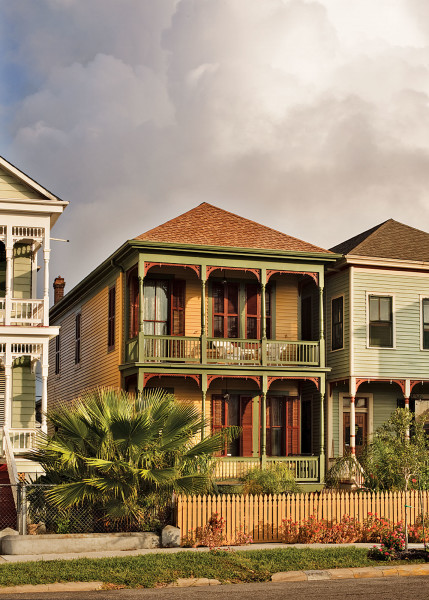
Well into adulthood, Cathy Hitchcock and her husband, Steve Austin, went back to school, Cathy for a master’s in social work and Steve for a doctorate in naturopathic medicine. When they finished, in 1985, restoring a Victorian was the last thing on their minds. But “it was all we could afford,” Cathy says—they paid $30,000 for a tiny fixer-upper. An old Portland (Oregon) City Directory listed the 800-sq.ft. house as a “common laborer’s home.” Steve preferred “vest-pocket Victorian” for the 1899 cottage.
Cathy Hitchcock and Steve Austin. Blackstoneedge.com
The couple thought they’d just clean it up and sell it in a few years. But enthusiasm kept them here; they would often redo a project until they got it right. “We learned from plenty of mistakes,” Cathy says. Off came red siding and the ersatz-Colonial door. Gone was the high-gloss pink that had been painted right over peeling wallpaper.
A collection of Victorian antiques began to grow. Fringed portières of cut velvet and chenille were hung in double swags. A local artisan was commissioned to create stained-glass windows in the style of the famous Victorian-era Povey brothers. Austin and Hitchcock ended up with a Victorian jewel box that was the talk of the neighborhood. Steve’s passion for research and the couple’s example set off a wave of restoration fever.
Back in Portland, they downsized to a condo in a prewar builidng, tranforming the plain rooms with Asian antiques; an ikebana arrangement sits atop an 1850s (late Edo-period) shop chest. Blackstoneedge.com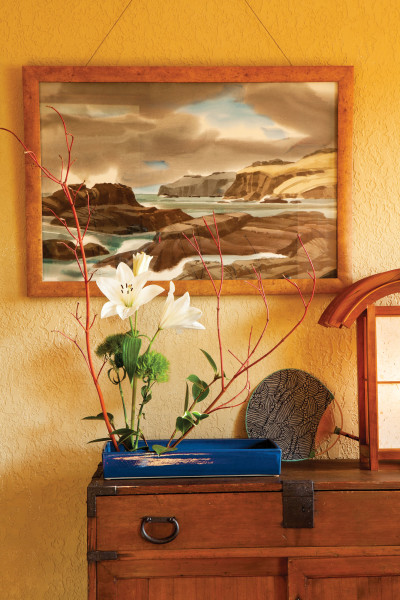
The couple moved to Galveston, Texas, in 2008—just as Hurricane Ike sped toward Texas, where it would make a direct hit on Galveston Island. While Portland friends were horrified, folks in Galveston thought them lucky: Although the 1907 house they’d purchased was badly damaged, the moving van full of antiques was still safely 50 miles away. Two days later, the stock market crashed and a housing bust ensued.
Steve and Cathy had to curtail plans for restoration. “Oddly, that became a blessing,” Cathy says. “We stenciled several rooms that were to have been papered with expensive wallpapers. We dropped a plan to add a modern pantry, and instead did an authentic re-creation of a turn-of-the century kitchen. The result was our most authentic interior.”
This house was actually more typical of 19th-century Southern town houses, with a plan that remained popular in Galveston into the early 20th century. Late-Victorian decorating conventions were used throughout.
A more recent home is this 1920 transitional bungalow in Portland, which readily took to their Asian antiques. Blackstoneedge.com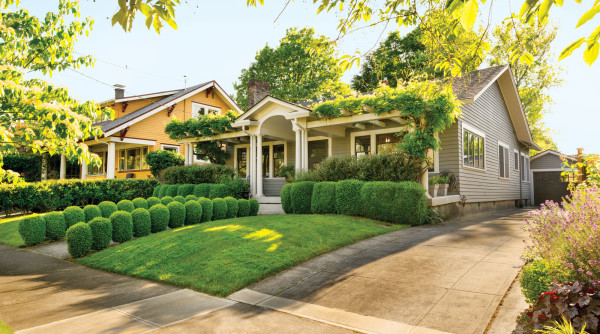
The Austin–Hitchcocks won a preservation award from the Galveston Historic Foundation. When they decided to move back to Portland, miraculously they found a buyer who appreciated their vision for the house, authentic kitchen and all. “He said he wanted to live in a museum,” Steve told us then.
Next the couple moved into a white-box condo apartment in a good prewar building. They sold off Victorian furniture. But “we kept our 19th-century Chinese and Japanese collections,” Cathy explains. “We envisioned an ‘Eclectic Oriental’ approach. Our Meiji-era (1868–1912) pieces are timeless.”
Soon the serial restorers were in a small 1920 bungalow in Portland. Plain wood trim, already painted black, fit well with an Asian aesthetic. “We’d started out with Japanese pieces,” Cathy says, “then incorporated them as exotica in our Victorian houses, and returned to an appropriate Japanese aesthetic in this Arts & Crafts-era bungalow.”
Cathy reports that she’s “happily ensconced in the Portland bungalow, retired, playing mah jongg, and studying Japanese flower arranging—ikebana.” Steve Austin passed away in March of this year. Their friendship with Donna Pizzi and Philip Clayton–Thompson of Blackstone Edge Studios assured that Steve’s legacy with Cathy has been preserved: Philip had photographed their projects for almost 25 years.
In the Galveston library, the design for hand-stenciled walls was borrowed from the exemplary Aesthetic interior of the Mark Twain house in Hartford, Connecticut. Linda Svendsen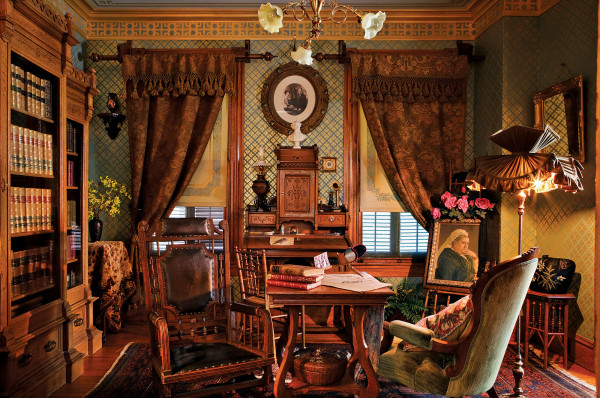
Not one, but two Victorians
In both Oregon and then Texas, the couple’s dedication resulted in house restorations that inspired their neighbors, for whom they consulted. “Study old photos,” Steve Austin often counseled. And “to be authentic, avoid getting cutesy.”
Stickley furniture is a good backdrop for Asian antiques that include a paper-covered lamp. Coincidentally, the previous owner had “ebonized” the woodwork. Blackstoneedge.com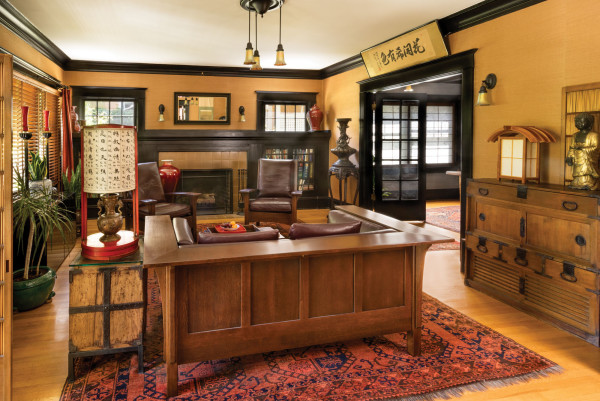
Asian Influence and the Craftsman Style
The attraction that started with the China trade became a fascination with all things Japanese in the Aesthetic Movement era. In their Northwest bungalow, “I didn’t want everything to be Stickley,” Cathy Hitchcock says. It was her idea to cover the white walls with grasscloth wallpaper, enhancing the ebony-color woodwork and creating flow between rooms in the small footprint. Asian antiques accomplished the rest.
Kitchens & Baths to go with the house
A sensitive approach is nowhere more visible than in the kitchens, each so appropriate to its house. Rather than take the room back to pre-electric days, the couple restored a 1930s-era kitchen in Portland. The bungalow kitchen is little changed from its original plan.
————————————————————————————
The Millers: A Most Honorable Mention
When the Millers bought this house, the ornament was gone and the porch enclosed. Blackstoneedge.com The Millers on their front porch. Blackstoneedge.com “We bought an old house in 1975 because it was all we could afford,” Dan Miller wrote to OHJ. He and Pat tell us that the local librarian let them in on a new publication called The Old-House Journal. Soon Dan was writing for OHJ, back in the newsletter days. The Millers have restored at least four of their own homes: a tiny Queen Anne cottage with a gingerbread porch, a three-unit brick Victorian, an Italianate with a carriage house, and another Victorian with Gothic Revival and Italianate elements. As active members of the Gifford Park Association in Elgin, Illinois—since 1979—they have volunteered in the rehabilitation of many problem properties in town. In Dan’s words: 1. We bought this house, affordable at $29,500, in 1975, and spent four years doing a historically sensitive rehab. We noticed there were marks on the porch suggesting details that had been there. We wanted to put them back, so we studied other old-house porches to find details that would match our marks. Thus began our 40-year love affair with Victorian porches. The mistakes I made on house #1 could have given me a doctorate from the school of hard knocks. My experience and reading OHJ allowed me to do better work on subsequent properties. 2. This is the second project, 1979 through 1986, a three-unit property. We did not live here, but rented it as an investment. We spent seven years doing a historically sensitive rehabilitation, including building new porches based on existing (rotted) elements. My wife, Pat, chose the colors and we did the painting. No longer dark brown, the details now showed; passersby would yell compliments or honk their horns. See the saga on YouTube https://www.youtube.com/watch?v=qffiyT7E7Zg 3. In 1986 we bought our dream house, at the time owned by a slumlord. It has amazing interior details; we sold our two properties to buy this one, then spent 12 years restoring it. We did 99% of the work ourselves. 4. Finally, the house next door was a two-unit and always had too many people, too many cars, and too many kids. When it was foreclosed upon, we decided to buy it to improve the quality of our lives. We spent four years rehabbing it, doing everything except the plumbing (because the city wouldn’t allow it). Being retired we were able to spend all day, every day there. Pat designed the porch and I made the parts for it. We were extremely honored to have Old-House Journal feature the porch project. See OHJ’s coverage of the Italianate porch project: See more Miller porch projects: ———————————————————————————– Reynolds has been working on the 1916 English Storybook Cottage for six years. I’m currently working on house number four! 1. First came an American Foursquare in Kansas City, which I fixed up ca. 1982. I repaired bad plaster, painted, and installed a new kitchen. My mom sent me a gift subscription to OHJ then and I’ve subscribed ever since. 2. Next came a 1918 Dutch Colonial in Royal Oak, Michigan, which I bought in 1984. I joked it was a very expensive mobile home, as it had been moved in 1924 during a railroad relocation project. My late brother and I replaced the entire roof, rafters and all, and replaced every ceiling. I rewired the house, replaced the plumbing and the bathroom, and did general fix-up and decorating. This one was a real “matchstick” house: not all old houses were well built. I would call the project a rehab, I just made it nice and livable. 3. In 1997, I got the bug again and bought “the dead guy’s house” in the Indian Village Historic District in Detroit. It’s a ca. 1900 Shingle Style/Queen Anne Victorian. The roof had leaked for 20 years, it hadn’t been cleaned for a decade, and was last maintained in the 1950s. There were holes in a side wall, one of which was so large that you could use it to walk outside (well, actually, it was on the second floor. This house received the National Trust and OHJ “Best Exterior Renovation” award in 2003. At 4,800 square feet and with 21 rooms, the house has been demanding and I’m still working on it. I tried for a restoration approach because, although it was disastrously unmaintained, the house hadn’t been messed with. The house was designed by noted local architects Stratton and Baldwin. (Stratton was the husband of Mary Chase Stratton, founder of Pewabic Pottery.) 4. In 2012, just before Detroit’s bankruptcy, I stumbled across a deal, also in Indian Village, a 1916 Storybook English Cottage. I am working on it today. I have party rewired, partly re-plumbed, fixed numerous bad ceilings, and stripped and repainted all the badly deteriorated exterior trim and windows (76 of them). I also completely redid the carriage house apartment over the garage, including a new roof. This also is a restoration. When word went out about OHJ’s “Serial Restorers” contest, Abatron president Marsha Caporaso spoke right up: “Is there any product more of your readers have needed and used than wood epoxies?” Indeed! Abatron, Inc., in Kenosha, Wisconsin, was among our very first advertisers when OHJ began to accept paid advertising in 1986. Diligent about meeting DIYer needs, Abatron considers building preservation a major component of the business, unlike many chemical companies that focus on large trade buyers. Abatron maintains regular customer contact through their website and Facebook, answering technical questions. Founded in 1959, Abatron specializes in the research, development, and custom formulation of epoxy and polyester compounds for repair of wood, concrete, metal, and stone. “I’m proud that our products are safe and easy to use,” Caporaso says; it’s the first company to have epoxy formulations GreenGuard Certified . We thank her for sponsoring “Serial Restorers.” abatron.com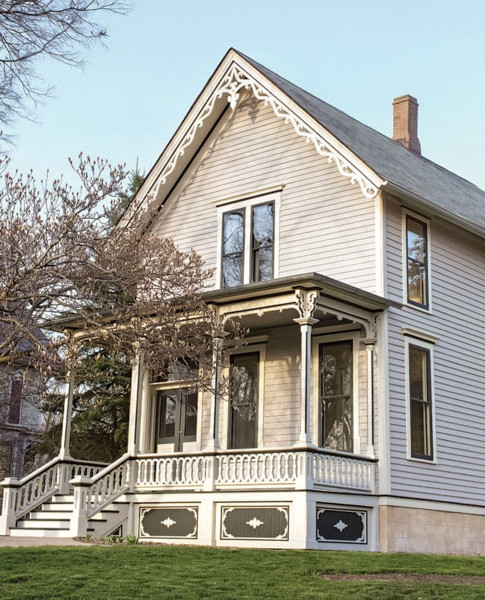
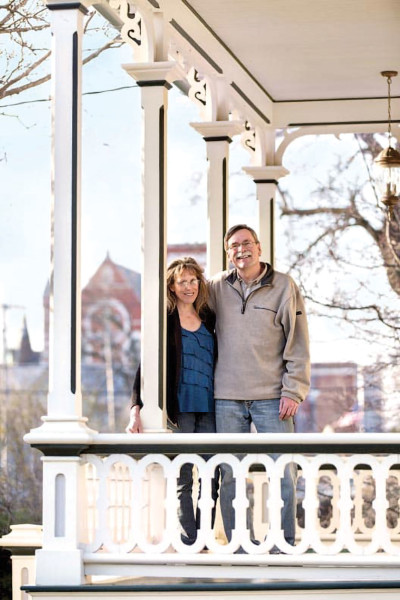
.
https://www.oldhouseonline.com/articles/re-creating-italianate-porch
http://oldhouseporches.com/our-dream-house/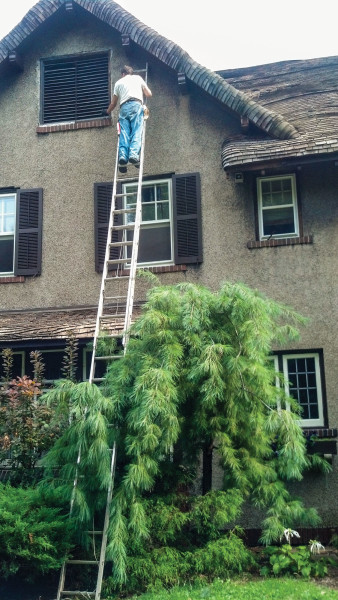
Serial Restorers: Mark Reynolds, Detroit, Michigan

DIY Commitment



